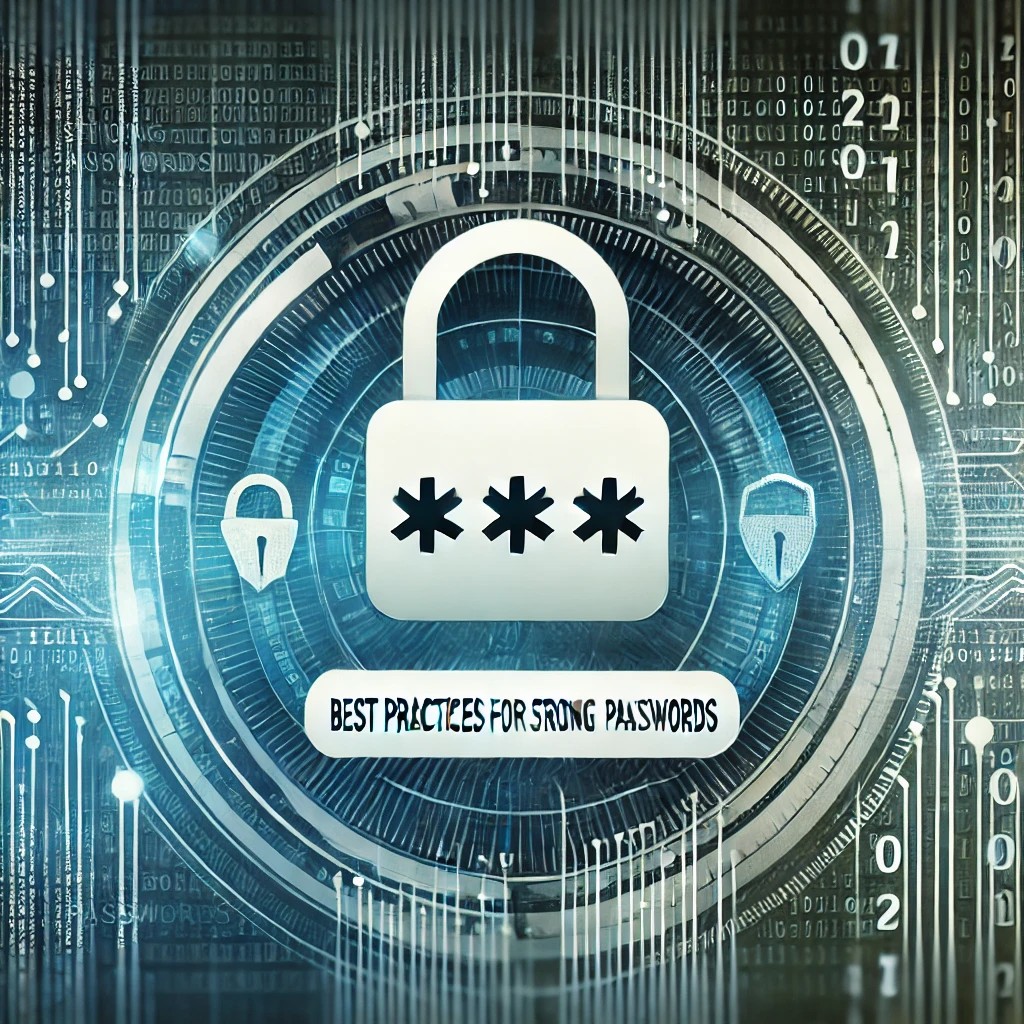In today’s digital age, where we store an abundance of personal and sensitive information online, having strong passwords is more crucial than ever. Cybersecurity threats, including data breaches, hacking attempts, and identity theft, are ever-present. However, implementing best practices for creating and managing passwords can significantly reduce the risks of falling victim to these threats. In this post, we’ll cover key strategies for ensuring your passwords are as strong as possible.
1. Use a Mix of Characters
A strong password should be complex and include a combination of:
- Uppercase letters
- Lowercase letters
- Numbers
- Special characters (such as !, @, #, $, %, &, *)
This diversity makes it significantly harder for hackers to guess or crack your password using brute-force attacks, where they try every possible combination until they find the right one.
2. Length Matters
The longer your password, the harder it becomes to crack. Aim for at least 12-16 characters. A longer password exponentially increases the time it would take for hackers to guess, even with powerful algorithms.
3. Avoid Common Words and Phrases
While it may be tempting to use easily remembered words or personal information, such as your name, birthdate, or “password123,” these are often the first combinations hackers will try. Additionally, passwords that are dictionary words or common phrases can be quickly cracked using dictionary-based attacks.
Instead, consider creating a password with random combinations of letters, numbers, and special characters or use a passphrase—a string of random words or a sentence that’s both easy for you to remember and hard for others to guess (e.g., “YellowHorse!MoonDance2024”).
4. Use Unique Passwords for Each Account
It’s essential to have a different password for each of your accounts. If you use the same password across multiple sites, a breach on one platform can give cybercriminals access to all your accounts. If you find it difficult to remember different passwords for every account, a password manager can help you store and organize them securely.
5. Enable Two-Factor Authentication (2FA)
Even the strongest password can be compromised if someone gains access to your account. Two-factor authentication (2FA) adds an extra layer of security by requiring you to verify your identity through something you know (your password) and something you have (like a code sent to your phone). Enabling 2FA where available can drastically reduce the risk of unauthorized access to your accounts.
6. Update Your Passwords Regularly
Changing your passwords regularly—especially for important accounts like your email, banking, and social media—is a good practice to prevent long-term exposure to potential threats. Set a reminder to review and update your passwords at least once every few months.
7. Consider a Password Manager
Remembering complex passwords for multiple accounts can be overwhelming. Password managers are tools that securely store all your passwords in an encrypted format. Many password managers also help you generate strong, random passwords, so you don’t have to create them yourself. Popular options include LastPass, Dashlane, and Bitwarden.
8. Be Careful with Security Questions
Many services ask you to set up security questions as a backup in case you forget your password. However, the answers to these questions (like your mother’s maiden name, your first pet’s name, or your favorite color) may be easily guessable or available through public information. If possible, treat security questions the same as passwords, choosing answers that are random and not easily tied to you personally.
9. Watch Out for Phishing Attacks
Even with strong passwords, a common method of gaining access to your accounts is through phishing attacks. Hackers trick you into giving them your login credentials by pretending to be a trustworthy entity, often through fake emails, phone calls, or websites. Always be cautious of unsolicited communications, and ensure that the website you’re logging into is legitimate by checking the URL and looking for HTTPS in the address bar.
10. Stay Informed
Cybersecurity is an ever-evolving field. New threats and vulnerabilities emerge regularly, and it’s essential to stay updated on best practices for protecting your information. Follow reputable cybersecurity blogs, and consider subscribing to services that monitor your accounts for potential breaches.
By following these best practices for strong passwords, you significantly reduce the chances of your personal information being compromised. Strong passwords are a fundamental part of cybersecurity, but they are just one piece of the puzzle. Make sure to combine good password hygiene with other security measures like two-factor authentication and regular updates to maintain your digital safety.
